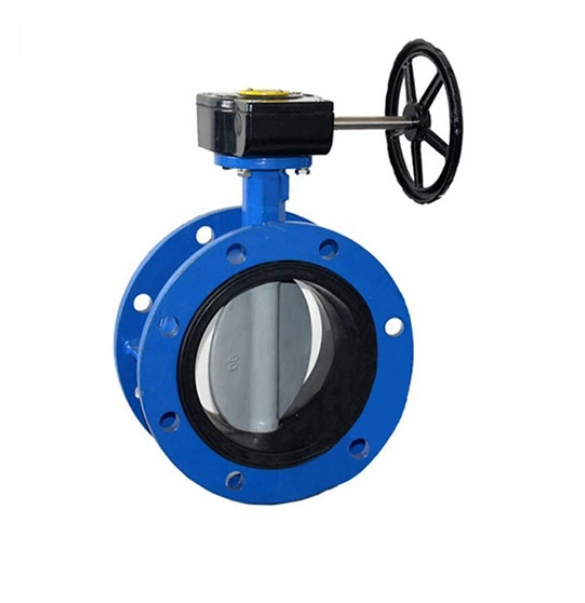The differences between wedge GGG50 butterfly valves and parallel butterfly valves lie primarily in their design and operation. Here's a comparison of the two types:
Design:
Wedge GGG50 Butterfly Valve: This type of butterfly valve features a wedge-shaped disc that is positioned at an angle to the flow direction when fully closed. The disc is designed to wedge tightly between the valve seat and the pipe wall, providing a tight shut-off and preventing leakage.
Parallel Butterfly Valve: In a parallel butterfly valve, the disc is positioned parallel to the flow direction when fully closed. The disc seals against the valve seat using a flat or slightly conical surface, providing a reliable shut-off.
Sealing Mechanism:
Wedge GGG50 Butterfly Valve: The sealing mechanism of a wedge butterfly valve relies on the wedging action of the disc between the seat and the pipe wall to achieve a tight seal. This design is particularly effective for applications requiring bubble-tight shut-off.
Parallel Butterfly Valve: Parallel butterfly valves use a sealing mechanism where the disc presses against the seat using a flat or slightly conical surface. This design provides a reliable seal across the entire circumference of the disc.
Pressure Drop:
Wedge GGG50 Butterfly Valve: Due to the wedging action of the disc,
ggg50 butterfly valve wedge butterfly valves typically have a higher pressure drop compared to parallel butterfly valves. This can affect the flow characteristics and energy efficiency of the system.
Parallel Butterfly Valve: Parallel butterfly valves generally have a lower pressure drop due to the smoother flow path created by the flat disc and seat design. This results in reduced energy consumption and improved system performance.
Applications:
Wedge GGG50 Butterfly Valve: Wedge butterfly valves are often used in applications requiring tight shut-off, such as water treatment plants, chemical processing, and HVAC systems.
Parallel Butterfly Valve: Parallel butterfly valves are suitable for a wide range of applications, including HVAC systems, water distribution, wastewater treatment, and industrial processes, where moderate shut-off capability is required.
Installation:
Wedge GGG50 Butterfly Valve: Wedge butterfly valves require careful alignment during installation to ensure proper sealing and prevent leakage. The wedging action of the disc may also require higher operating torque compared to parallel butterfly valves.
Parallel Butterfly Valve: Parallel butterfly valves are generally easier to install and operate due to their simpler design and lower torque requirements. They offer more flexibility in terms of installation orientation and alignment.
Overall, both wedge GGG50 butterfly valves and parallel butterfly valves have their advantages and are suitable for different applications based on the specific requirements for shut-off capability, pressure drop, and installation considerations.

